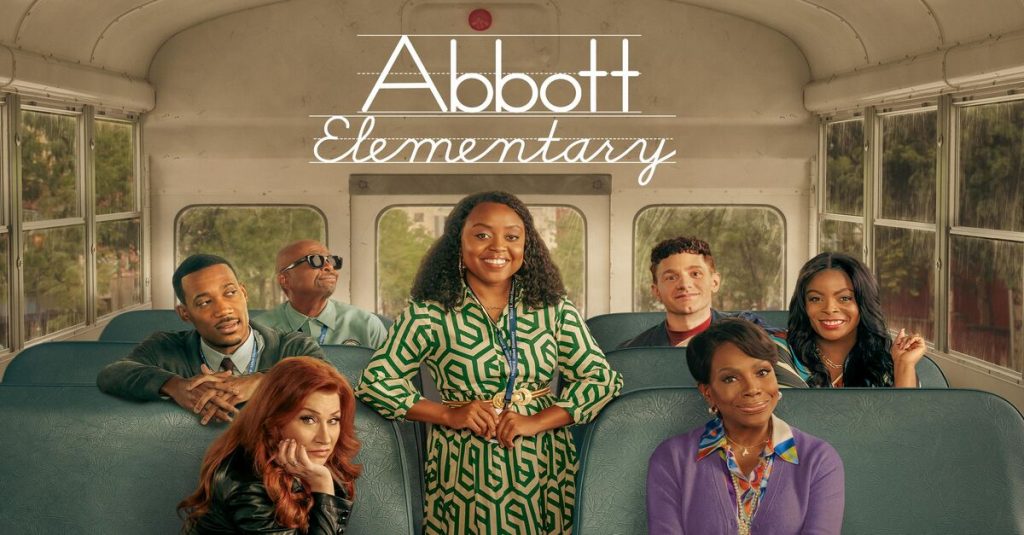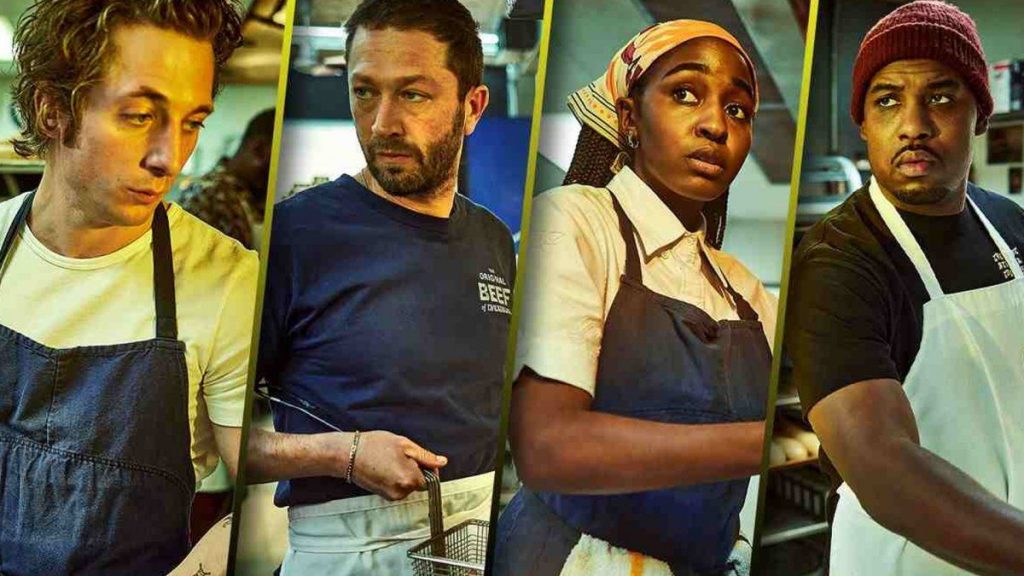Writing the Ensemble Cast: A Screenwriter’s Guide to Balancing Multiple Characters

Film and television shows are frequently thought of as having a character hierarchy – a main character that is surrounded by secondary and guest characters to advance the plot. However, not all narratives must have a single protagonist. They might have an ensemble. At its core, an ensemble cast is a group of characters who share narrative importance. There are, in essence, multiple, fully-formed protagonists, which need to be managed equally.
Writing an ensemble demands more than simply populating your script with intriguing personalities. It requires a unifying core that holds every story arc together and an allocation of screen time that lets each character’s voice resonate, both individually, and as part of a unifying whole. This is vital to avoid the risk of writing multiple concurrent and unrelated storylines that don’t connect.
Ensemble stories share several common characteristics:
- Multiple protagonists or co-leads
- Interweaving storylines or perspectives
- Balanced screen time (though not always equal)
- A central theme or unifying event tying everyone together
Unlike stories with a traditional hero’s journey, ensemble pieces thrive on collective character development. Think of Everything Everywhere All At Once, where multiple characters undergo transformation amidst a chaotic multiverse, or (The White Lotus), where various vacationers’ lives intertwine around themes of privilege, class, and deception.
Defining Your Ensemble’s Collective Goal
At its core, an ensemble cast is not merely a collection of main characters; it’s a community with a shared purpose, an emotional or situational hub that draws each character into a central orbit with a common goal. Unlike a single protagonist structure, where one hero carries most of the weight of the story, ensemble narratives distribute that weight across multiple characters whose individual quests complement, collide with, or complicate one another.
By establishing a clear “why” and “where” — whether it’s a school in Abbott Elementary, an internal murder mystery in Only Murders in the Building, or a medial mogul family in Succession — you give every character a reason to stand shoulder-to-shoulder, even when their philosophies and modus operandi diverge and evolve.

Main cast of Abbott Elementary. Photo courtesy of ABC Networks/ Hulu
Unifying the Ensemble Around a Central Hub
Perhaps the most essential ingredient in ensemble writing is unification — a nucleus that holds each storyline in orbit. When your characters share a common place, situation, and problem, their diverse viewpoints become the story’s core.
Abbott Elementary commences with a blueprint: an underfunded Philadelphia public school serves as both literal and metaphorical home. Teachers Janine (Quinta Brunson), Gregory (Tyler James Williams), Ava (Janelle James), and Barbara (Sheryl Lee Ralph) bring conflicting solutions to the same issues — budget cuts, bureaucratic inertia, disengaged students. Janine’s boundless optimism bumps against Gregory’s cynicism or Ava’s blunt pragmatism rubs Barbara’s veteran caution the wrong way. Their shared mission — to give these children the education they deserve — unites them even as their clashes propel every episode.
Similarly, The Bear anchors its narrative in The Original Beef of Chicagoland deli kitchen. The constant threat of closure forces Carmy (Jeremy Allen White) and Richie (Ebon Moss-Bachrach) to debate reinvention versus tradition, while Sydney (Ayo Edebiri) and Tina (Liza Colón-Zayas) regularly clash over technique and trust. Outside the kitchen, their personal lives — Carmy’s personal relationship struggles, Tina’s impending motherhood — provide emotional counterpoints that enrich the central conflict without derailing it.
Even in TV series like Only Murders in the Building, where the hub is an apartment complex and a murder mystery, the same principle applies. Mabel’s (Selena Gomez) healing from trauma and loss, Charles’s (Steve Martin) midlife burnout or Oliver’s (Martin Short) refusal to accept his directorial decline subplots never feel tacked on because they surface in communal spaces — hallways, rooftop parties, or even elevators — that illustrate both personal and collective challenges.

Main cast of The Bear. Photo courtesy of FX/ Hulu
Introducing Ensemble Characters
When your ensemble expands beyond three or four leads, first impressions become crucial. A memorable character introduction should quickly accomplish three tasks:
- name your character,
- reveal a defining trait, and
- hint at their role in the central conflict and its resolution.
One of the first challenges of writing an ensemble is introducing a broad range of characters without overwhelming your audience.
- Use a Central Catalyst or Event
Whether it’s a dinner (Glass Onion), a crisis (Don’t Look Up), or a location (The White Lotus), start with a unifying situation. It anchors the audience and creates a natural reason for characters to be introduced outside their usual habitats. - Distinctive First Impressions
Each character needs a clear and memorable introduction — visually, emotionally, or through action. Think of how Barbie (Margot Robbie) uses costume, color, and dialogue to immediately distinguish each variant of Barbie and Ken (Ryan Gosling). - Drip Feed, Don’t Dump
You don’t need to introduce everyone in the first ten minutes. The Bear gradually introduces its kitchen staff over several episodes, letting the dynamics evolve naturally.
Imagine the opening of Barbie, where we meet Fashion Barbie adjusting her ensemble with military precision. In that single beat — her demeanor, dialog, and world — we see her obsession with perfection and her place in Barbie Land’s hierarchy.
In Only Murders in the Building, Charles’s (Steve Martin) introduction in his plush Manhattan apartment conveys his faded celebrity and clinging to past acting glory, Oliver’s (Martin Short) frantic misfires reveal a fading star desperate for relevance, and Mabel’s (Selena Gomez) sardonic observations solidify her as the group’s emotional anchor.
Not all character arcs need to be transformational. Some characters resist change, others regress, and some stay constant, but reveal hidden depth. This contrast creates narrative tension and emotional depth. In Succession, Roman Roy’s (Kieran Culkin) arc is less about growth than it is about exposure and asserting authority — stripping away bravado to reveal brokenness.
Character arcs shouldn’t exist in silos. The best ensemble writing ensures that each arc affects others.

Main cast of Only Murders In The Building. Photo courtesy of Hulu.
Weaving Individual Arcs into the Group Mosaic
In an ensemble, every character needs a personal arc — an internal journey that dovetails with the TV series’ or film’s spine. The trick lies in staggering those emotional and plot milestones so the story maintains narrative momentum without overwhelming viewers with too many details. Drip feed these moments that diverge from the main action. Your audience will appreciate it.
Wes Anderson’s Asteroid City has over a dozen principal characters to keep track of. Anderson spaces revelations so that one breakthrough flows into another, preventing narrative flat spots and too many reveals in a scene. A teacher’s romantic admission unfolds in Act One, a widower’s confession emerges at the midpoint, and a child’s scientific discovery climaxes at the finale. Each arc feels complete, yet they all reflect themes of grief and connection under a meteor shower’s glow.
Contrast that with Guardians of the Galaxy Vol. 3, where Peter Quill’s (Chris Pratt) journey through grief in the wake of Gamora’s (Zoë Saldaña.) loss runs parallel to Rocket’s quest for identity. Though their stories differ in circumstance and scale — cosmic service versus personal belonging — they speak to the same thematic backbone.
By plotting these arcs on a visual map — index cards on a white board or columns in a spreadsheet — you can ensure that no two characters hit their turning points in the same scene.

Main cast of Guardians Of The Galaxy Volume 3, Photo courtesy of of DC Studios
Choreographing Intersection Dynamics
True ensemble storytelling comes alive when characters collide, not just physically, but psychologically, socially, and intellectually.
Reflect on the pivotal lunch scene in The Bear, where Carmen’s (Jeremy Allen White) polished technique as sous-chef clashes with Sydney’s (Ayo Edebiri) perfectionist streak. Their banter over plating techniques morphs into a charged exchange about legacy, loyalty, and ambition — transforming a simple prep-kitchen interaction into a crucible for both characters.
In Glass Onion, the dinner-party reveal functions as a high-stakes collision: hidden alliances fracture under suspicion, and polite cocktails give way to subtly barbed accusations. Shared objectives warp into personal vendettas, reminding us that a central setting can cover countless dramas simultaneously.
To craft these intersections, identify the central location — classroom, kitchen, island villa — and populate it with overlapping goals. A teacher wants stability while a new principal seeks innovation; a chef fights for authenticity while an investor demands profit; an amateur sleuth craves truth while a neighbor fears scandal. When these ambitions collide, punches fly.
It’s the chemistry, conflict, and conversation that happen when diverse characters bounce off each other in unexpected ways.
- Create Contrast, Not Clones
An ensemble cast thrives on diversity of thought, temperament, and goal. You want clashes, unlikely alliances, and unexpected emotional resonance. Only Murders in the Building brings together a washed-up actor, an eccentric director, and a guarded millennial — resulting in humor, heart, and surprise. - Triangles Over Pairs
Think beyond simple A+B character interactions. Trios and groups create richer subtext and power dynamics. In Ted Lasso, scenes with Ted (Jason Sudeikis), Rebecca (Hannah Waddingham), and Keeley (Juno Temple) often create more layered tension and revelation than one-on-one dialogues. - Rotate Pairings and Groups
Don’t let characters stay in their usual duos or cliques. Nudge them out of their comfort zones. Change the combinations to spark new insights and conflicts. Reservation Dogs does this expertly, pairing different members of the teen group in each episode to showcase varying dimensions of their identities and relationships.

Main cast of Succession. Photo couretsy of HBO
Allocating Screen Time
In ensemble writing, imbalance can quickly devolve into narrative chaos. Too much focus on one arc leaves others feeling neglected.
One practical solution for screenwriters is a screen time grid — a matrix where episodes or acts form columns and characters sit in rows. Mark down every scene in which each character appears, noting whether it’s a cameo, a supporting moment, or the anchor of that beat. This process will reveal disparities and inequalities in your storytelling. This doesn’t mean that every character requires equal screen time, but rather intentional screen time to tell their stories.
Consider Succession’s final season. The Roy siblings — Kendall (Jeremy Strong), Shiv (Sarah Snook), Roman, and Connor (Alan Ruck) — each anchor multiple episodes, yet the series pivots from sibling to sibling, weaving boardroom coups with family betrayals and conflicts. Secondary players — journalists, lawyers, opportunists, once-aligned board members — seamlessly enter and exit, providing color and conflict without hogging the spotlight.
By consciously rotating your character focus, you keep the ensemble dynamic fresh. An episode might dive deep into one character’s personal crisis, then pull back to a broader group confrontation in the next installment.
Screen time distribution in an ensemble story isn’t about being equal — it’s about being purposeful.
- Narrative Weight, Not Minutes
Some characters may only appear briefly but leave a profound impact. Others may feature heavily, but serve as emotional anchors. In Past Lives, the focus shifts subtly between characters, letting each own key emotional moments without crowding the story. - Create Episode Arcs (Especially in TV)
In television, you can give specific episodes over to certain characters while maintaining a larger arc. The Bear’s Season 2 episode “Fishes” lets multiple characters have meltdowns in a holiday flashback — each getting a moment in the spotlight without derailing the overall story. - Emotional Math Over Air Time
Ask: “Who needs to change here?” or “Who needs to be heard?” Give screen time where emotional payoff is highest. That’s why Knives Out centers Marta (Ana de Armas), even though the film is packed with quirky suspects — her arc is the heart of it.
Final Thought: Control the Chaos, Don’t Eliminate It
The beauty of ensemble storytelling lies in its ability to mirror life’s messiness. Our lives don’t revolve around a single narrative — we’re all part of countless overlapping stories. So as you develop your next ensemble piece, ask yourself: Am I telling one big story through many voices — or many small stories through one big idea?
Join the Discussion!
Related Articles
Browse our Videos for Sale
[woocommerce_products_carousel_all_in_one template="compact.css" all_items="88" show_only="id" products="" ordering="random" categories="115" tags="" show_title="false" show_description="false" allow_shortcodes="false" show_price="false" show_category="false" show_tags="false" show_add_to_cart_button="false" show_more_button="false" show_more_items_button="false" show_featured_image="true" image_source="thumbnail" image_height="100" image_width="100" items_to_show_mobiles="3" items_to_show_tablets="6" items_to_show="6" slide_by="1" margin="0" loop="true" stop_on_hover="true" auto_play="true" auto_play_timeout="1200" auto_play_speed="1600" nav="false" nav_speed="800" dots="false" dots_speed="800" lazy_load="false" mouse_drag="true" mouse_wheel="true" touch_drag="true" easing="linear" auto_height="true"]










You must be logged in to post a comment Login